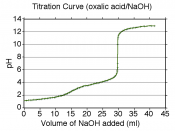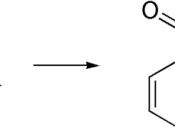In this experiment we analyzed and synthesized organic compound acetylsalicylic acid or aspirin from acetic anhydride and salicylic acid. H2SO4 was used as a catalyst to speed up the reaction.
Theory Aspirin is a one of a least expensive and most useful drugs. From the ancient time people were chewing salix alba to reduce fewer, in a mid 19th century German scientist Gerhardt manage to synthesized aspirin but his report was ignored. Finally Felix Hofman (Bayer Company) manages to reduce side effects and create aspirin.
Aspirin is synthesized by reacting salicylic acid and acetic anhydride Acetic anhydride is a liquid at room temperature with a boiling point above 100ÃÂC and reacts with H2O to form acetic acid. The salicylic acid and aspirin are both solids that melt at temperatures above 100ÃÂ C Synthesis of aspirin We started this experiment preparing a warm water bath (around 85 degree C), and taking dry and heated 125 ml Erlenmeyer flask .Next
step was placing 2 g of salicylic acid into flask, mixing with 5.0 ml of acetic anhydride .To speed up the process of Crystallization we pour into flask 7 drops of catalyst H2SO4, and then we placed flask into water bath to heat up for 15 min.
When mixture was cooled to the room temperature (around 30 degree C little bit less) we slowly added 20 ml of ice-cold water to force all aspirin to crystallize from solution. Crystallization slowly occurs as mixture is cooling. After full crystallization we had to separate crystals from the rest of the mixture. We used vacuum filtration standard technique for separation solids from liquids Analysis of aspirin Titration and back titration We used titration and back titration process to calculate molecular mass. Back titration was used because aspirin is a weak acid and reaction would be...


